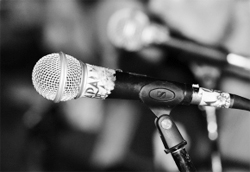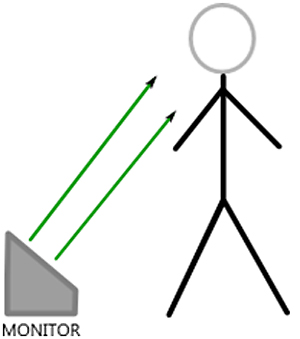
2) How they use the microphone
Vocal microphones need to be held right up to a singer’s month, tilted at about a “45-ish” degree angle up to their mouth. This way, you can get the clearest sound without getting other stage noises in the mix.
While you can’t get total sound isolation in the live environment, by having the sound source so close to the microphone, you can get pretty darn close. Let’s say our vocalist is properly holding the microphone.
3) The monitor they use
Focusing on the source of this question and the original topic of feedback, two monitor types are to be noted; floor monitors, also called floor wedges, and spot monitors. Spot monitors are smaller and are usually placed on a stand.
The vocalist, and any musician, sees the monitor as a necessity. If they can’t hear other singers, they can’t harmonize. If they can’t hear the right rhythm instrument, they can’t sing in time. It’s for this reason musicians might spend a lot of time asking for the right monitor volume and mix.
Let’s put our vocalist in front of a floor monitor.
4) How they use the monitor
Our vocalist needs to be standing on-axis to the floor wedge. The moment they’re off-axis, that is to say, they’re outside of the sound cone radiating from the monitor loudspeaker, then they are hearing significantly less volume.
But how close do they need to stand?
This leads us into the topic of stage volume. Stage volume is the amount of sound on a stage. Sources of stage volume would be acoustic instruments, singers, drum kits, and monitors. These are all different sounds that can be heard on stage that don’t emanate from the house speakers.
Our vocalist needs to stand as close as possible to their floor wedge because:
—They need to clearly hear their monitor
—You need to keep the stage volume to a minimum
Stage volume, when excessive, destroys the sound in the room because, at that point, the stage volume is exceeding the house volume. Excessive stage volume also makes monitor mixing a nightmare.

